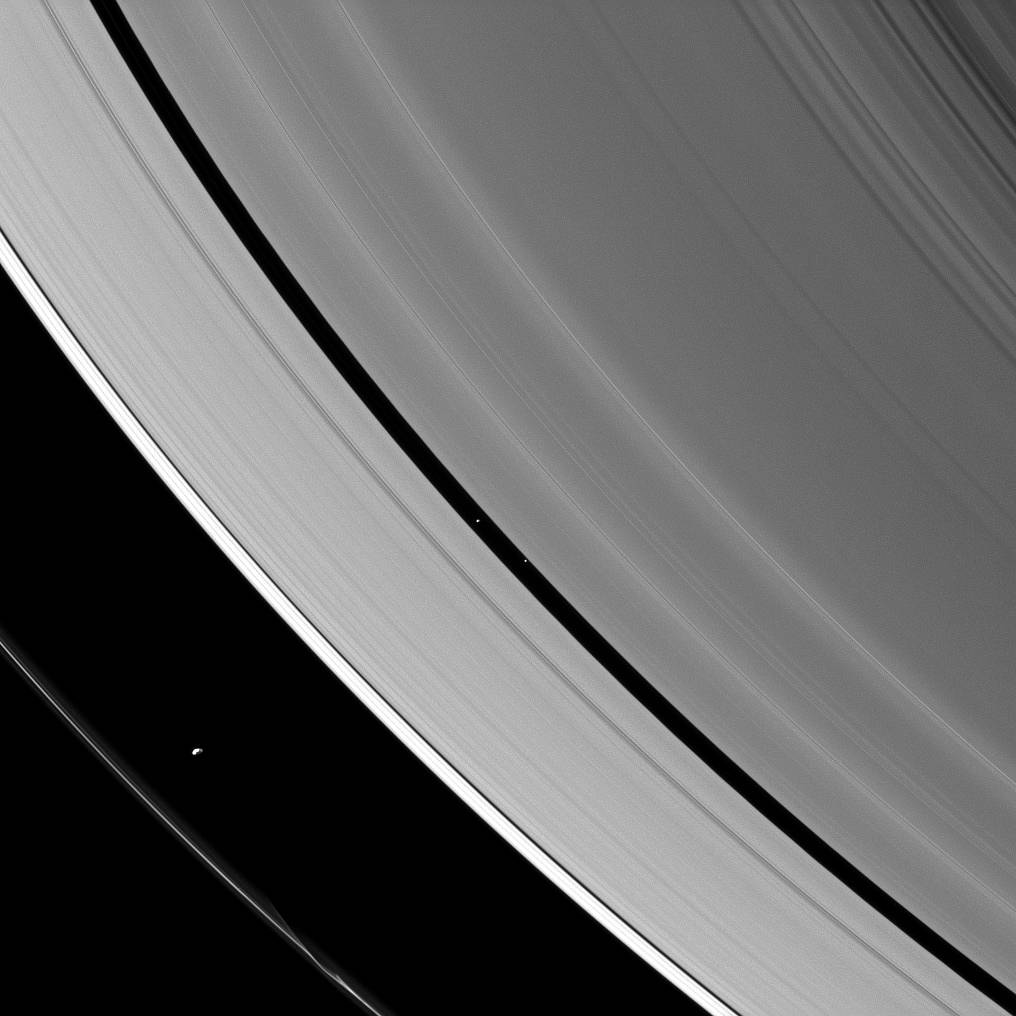The ring-region Saturnian moons Prometheus and Pan are both caught “herding” their respective rings in this image. Through their gravitational disturbances of nearby ring particles, one moon maintains a gap in the outer A ring and the other helps keep a ring narrowly confined.
Prometheus (53 miles, or 86 kilometers across), together with Pandora (not seen in this image), maintains the narrow F ring seen at the bottom left in this image. Pan (17 miles, or 28 kilometers across) holds open the Encke gap in which it finds itself embedded in the center. The bright dot near the inner edge of the Encke gap is a background star.
This view looks toward the unilluminated side of the rings from about 29 degrees below the ringplane. The image was taken in visible violet light with the Cassini spacecraft narrow-angle camera on Sept. 18, 2012.
The view was acquired at a distance of approximately 1.4 million miles (2.3 million kilometers) from Pan and at a Sun-Pan-spacecraft, or phase, angle of 98 degrees. Image scale is 9 miles (14 kilometers) per pixel.
The Cassini-Huygens mission is a cooperative project of NASA, the European Space Agency and the Italian Space Agency. The Jet Propulsion Laboratory, a division of the California Institute of Technology in Pasadena, manages the mission for NASA’s Science Mission Directorate, Washington, D.C. The Cassini orbiter and its two onboard cameras were designed, developed and assembled at JPL. The imaging operations center is based at the Space Science Institute in Boulder, Colo.
Image credit: NASA/JPL-Caltech/Space Science Institute
2 min read



























